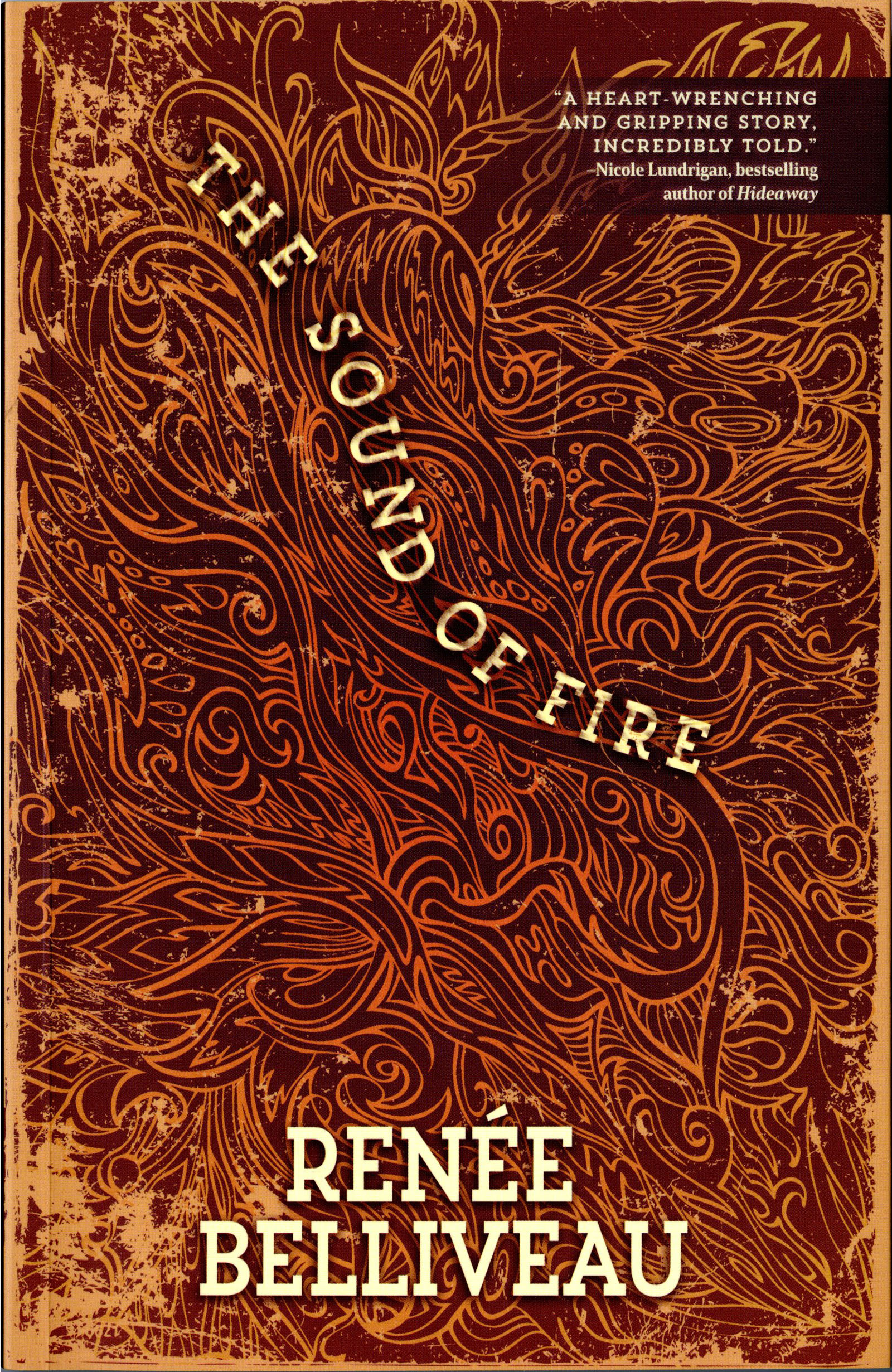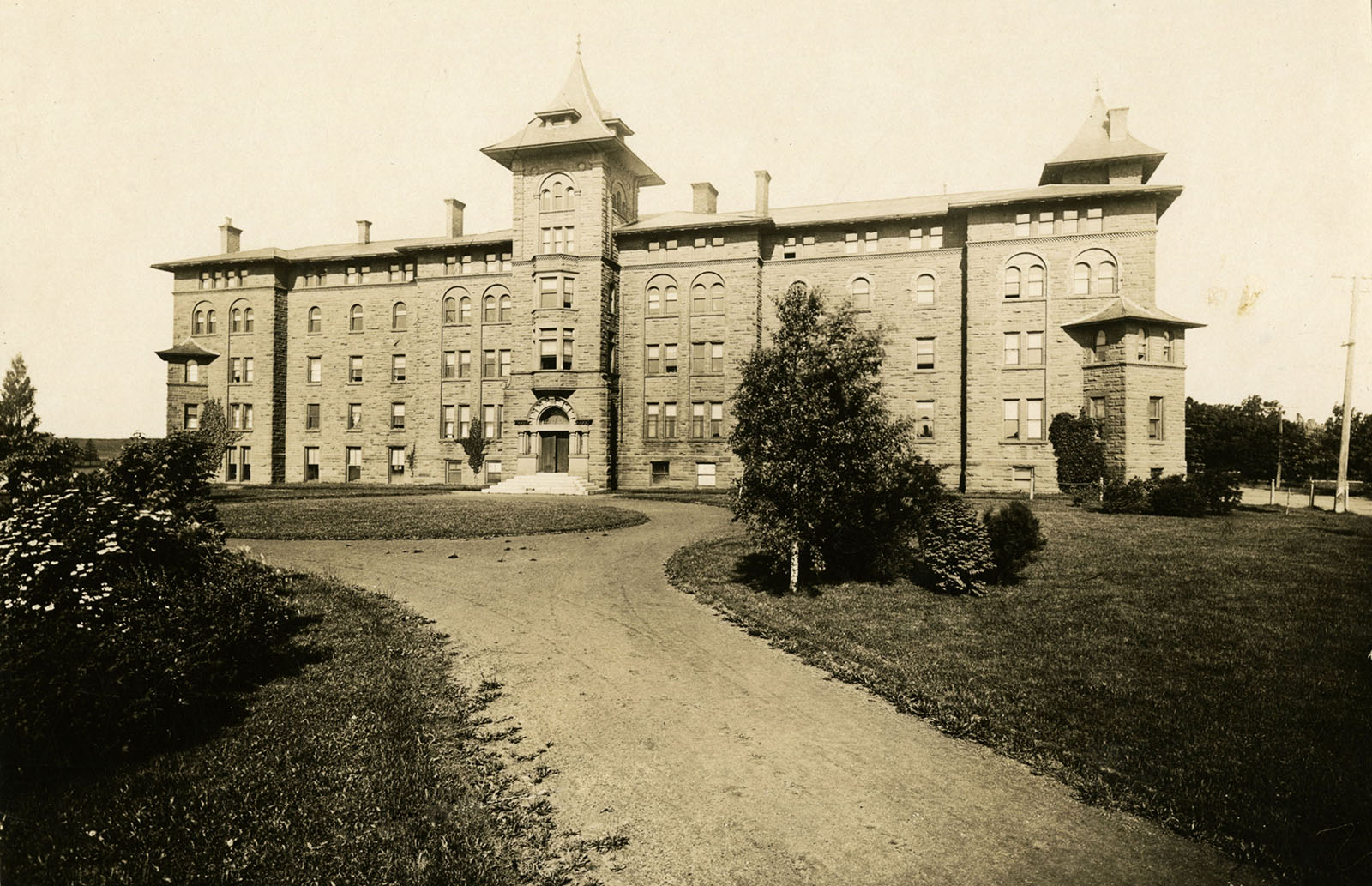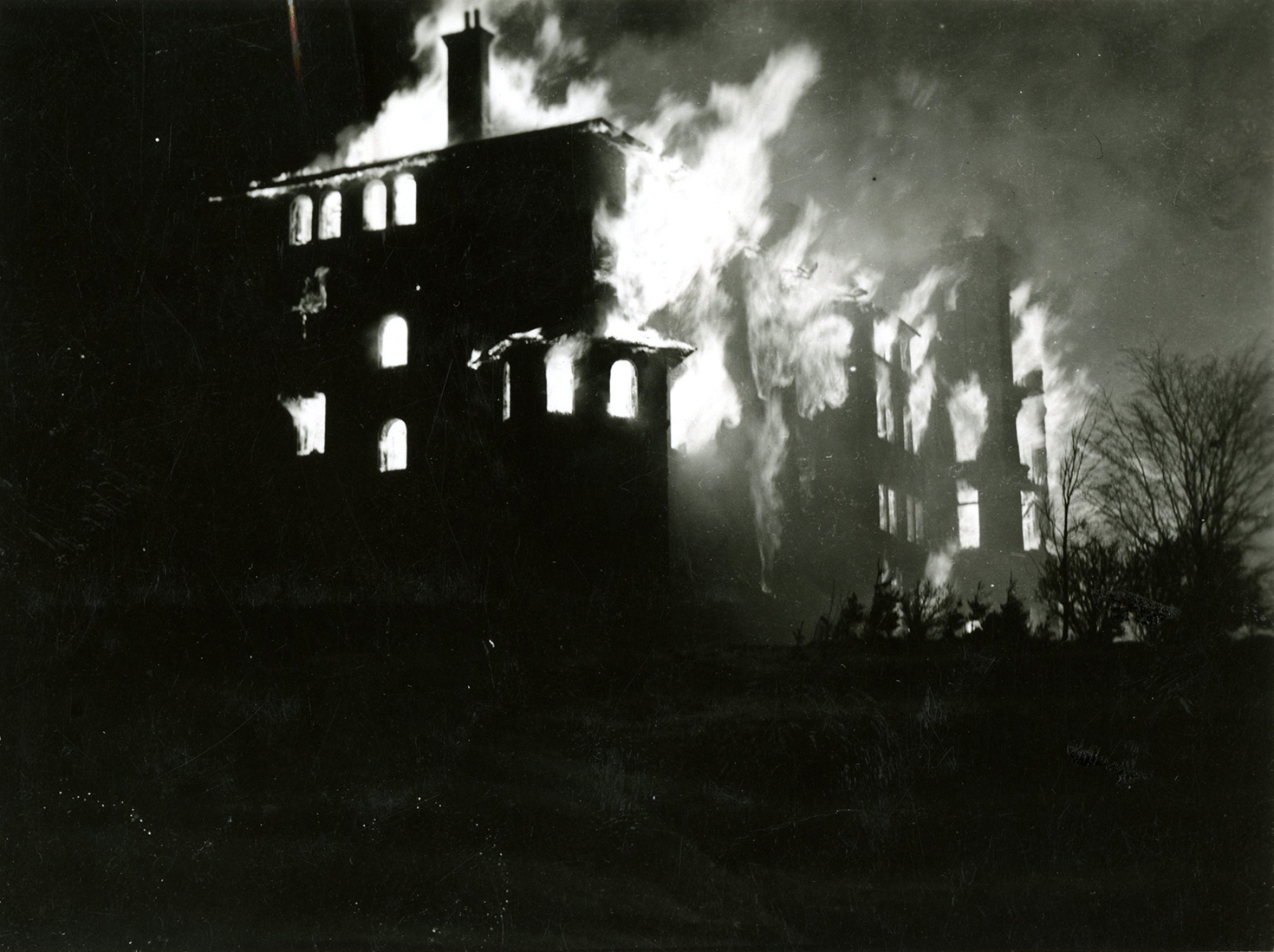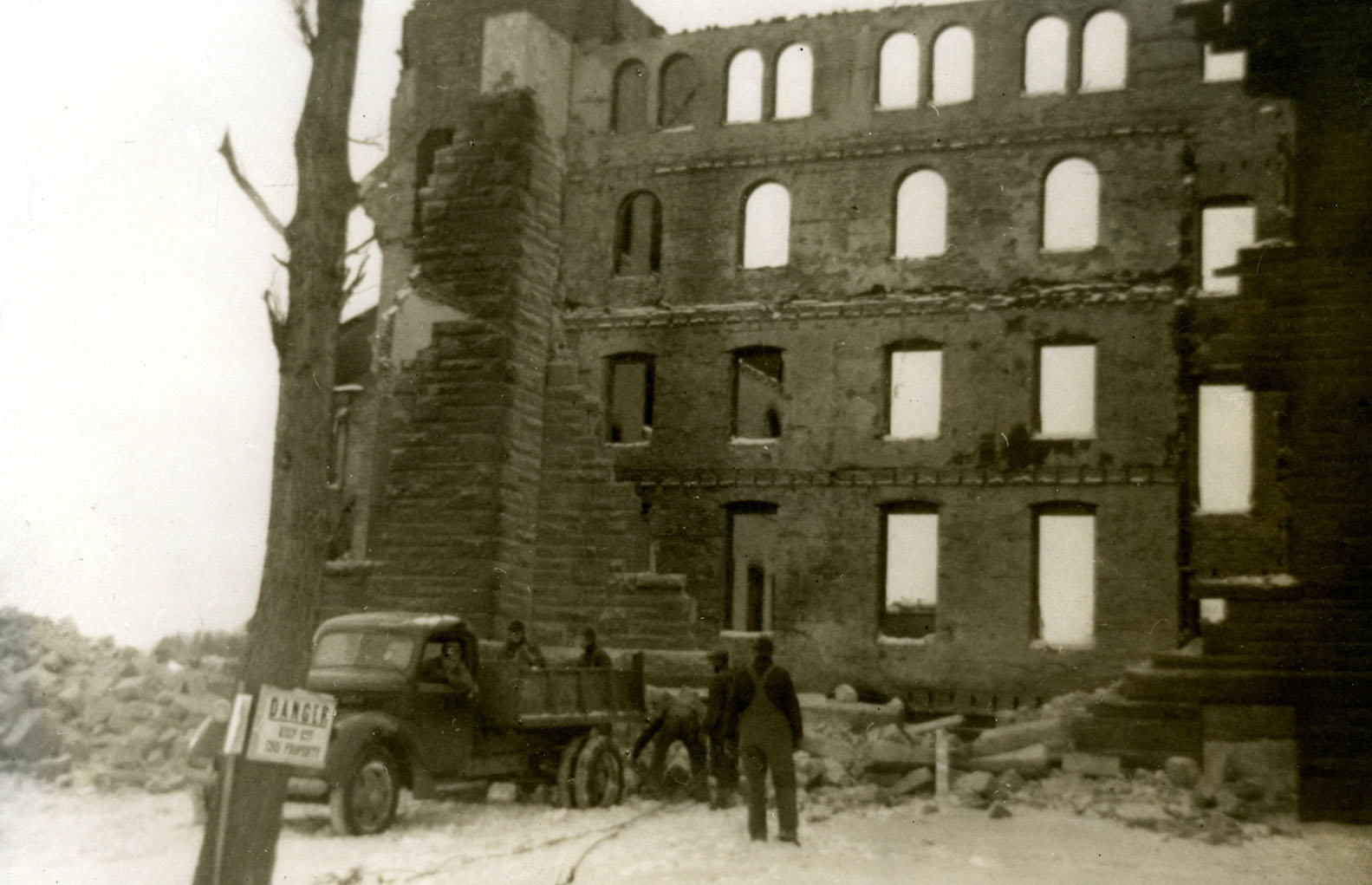A new look at ‘Mount Allison’s darkest night’

“From my essence sprung embers, blinking amongst the stars in the darkened sky. They floated, curious about the sounds the winds carried over the marshes, the voices that echoed in the night. Do you hear them? Those cries, those sudden shouts. They call my name.”
— from The Sound of Fire
The Mount Allison University Archives is a treasure trove of stories.
One of the most harrowing has now been turned into a novel by Renée Belliveau. The Sound of Fire is based on the events and aftermath of the 1941 men’s residence fire in which four students died.
“(University Archivist) David (Mawhinney) calls it ‘Mount Allison’s darkest night,’ and I think that is still true,” says Belliveau, the current acting university archivist. “It was probably the greatest tragedy we ever witnessed on campus.”

Belliveau first became acquainted with the story when she returned to Mount Allison as an archival intern after completing a Master of Arts in English at University of Waterloo. When several relatives of one of the young men who had died in the fire visited campus, Belliveau curated an archival exhibition for them.
“I had been interested in the fire before that point, but that really cemented it for me,” she says. “I came home from work and thought of writing a book about it.”
She began working on the novel in the fall of 2019 — just after moving to Toronto to begin her Master of Information.
“It was a way to write myself back home,” she says.
The novel is told through a series of characters, each offering a different perspective on the fire. Although Belliveau uses fictional names, many of the stories are partially or entirely true and some will recognize well-known Allisonians like Alex (’42, LLD ’68) and Rhoda (’42) Colville, Ruth (Schwartz) Goldbloom (’44), and President George Trueman (1902) in its pages.
“I didn’t want to be limited by the facts. I wanted to be able to imagine what had happened without putting words into anyone’s mouth,” she says. “Ultimately, I hope the fictionalized account will draw people in more and allow them to imagine what it was like in a way that non-fiction may not have achieved.”
Belliveau scoured the University Archives to find first-hand and contemporary accounts of the fire.

“The newspaper coverage was probably the most helpful — they were covering the story and providing as much detail as possible,” she says. “We also have letters, diary accounts, photographs, and oral history interviews, and those inspired the format of having different perspectives. I think the records show that the community came together in a way that was remarkable — that reflects the Mount Allison spirit.”
Belliveau hopes the novel, which was launched on campus Nov. 4, is a new way for people to connect with this part of Mount Allison’s history, especially as this year marks the 80th anniversary of the fire.
“I feel like I know these people, who have since died, but who are still alive in the Archives,” she says. “It’s a way to bring and carry that history forward.”

The Sound of Fire is available online and in-store through local independent bookstores, Indigo, Amazon, and Nimbus. It will be one of the works featured this winter in the new Alumni Book Club.
Online exclusive content: Q&A with Renée Belliveau
Q: You work as an archivist — what made you want to write this story as fiction rather than non-fiction?
A: My background is in literature — I have a degree from Mount A in English and a master’s in English, so my intention has always been to write fiction. I am drawn to historical fiction and this fascination is partly what brought me to archives. I never thought of writing this as a non-fiction account because I wanted to bring the records to life, and fiction allowed me to do that more vividly. Plus, it would have been a much shorter book in non-fiction given the few records we have.
Q: How did you manage to write a book during a pandemic, while completing a master’s degree?
A: I did most of the research while I was working here and started writing from Toronto, but when the pandemic hit I wasn’t allowed in the (University Archives) for a year. That made things difficult. It was fun to write, though. I didn’t have to plan ahead, I could sit and explore what each person experienced.
Q: What made you decide to make the fire itself a character?
A: I was nearing the end of the first draft when the voice of the Fire came to me, rather unexpectedly. I heard the words “I was sparked to life,” and rushed to write them down in my phone. It was a moment of weird magic. I think if I hadn’t captured them in that moment, the tone of the book would have been really different. Later, my editor [Whitney Moran (‘08)] pushed me to write even more from that perspective because she saw that was really the heart of the story and I’m glad she did.
Q: Do you have a favourite character or characters?
A: One of my favourite characters in the book is Lillian. She was inspired by a Facebook comment on an article the University did on the 75th anniversary of the fire. Someone said their mother, who was a child sent here from Britain during the war, was living in Sackville and remembered the fire vividly. So, she is inspired by a real person, but I didn’t have any specific records on her, so I had a lot of fun making it up.
Another character I love is Richard, who was inspired by the brother of one of the students who died, Joseph Fraser. I kept the Fraser family at the forefront of my mind when I was writing because I had met descendants from that family. We were planning to interview Joe’s brother, but he died before we got the chance, so I wrote his section not knowing what he went through, but really trying to imagine it. That is one of the characters I related to the most. Having experienced loss at a young age, I could envision what it must have been like to go home after the fire to a grieving family and then come back to campus to find things back to normal.
Q: What has the feedback been like so far?
A: The feedback from folks connected to Mount A has been overwhelmingly positive. I was anxious the descendants of those who died might be offended in some way, so I was pleased to hear from them that wasn’t the case. One said it was another record of the event that they could hold dear alongside their family memories.
Find out more
- Listen to an interview with Renée Belliveau on CBC's Shift - NB — Chapter & Verse: The Sound of Fire


